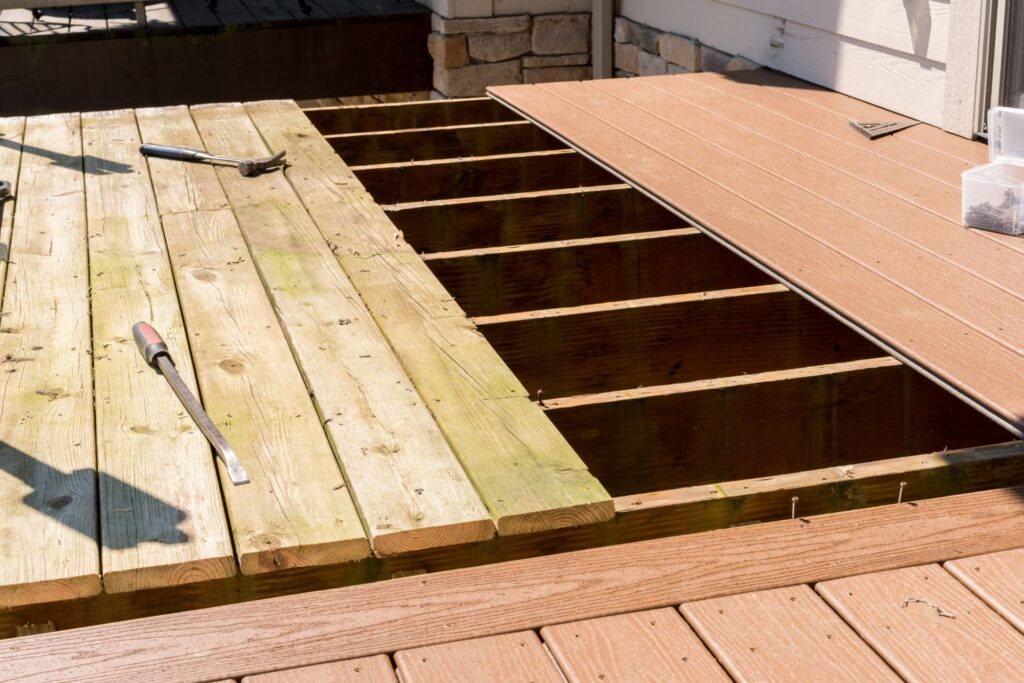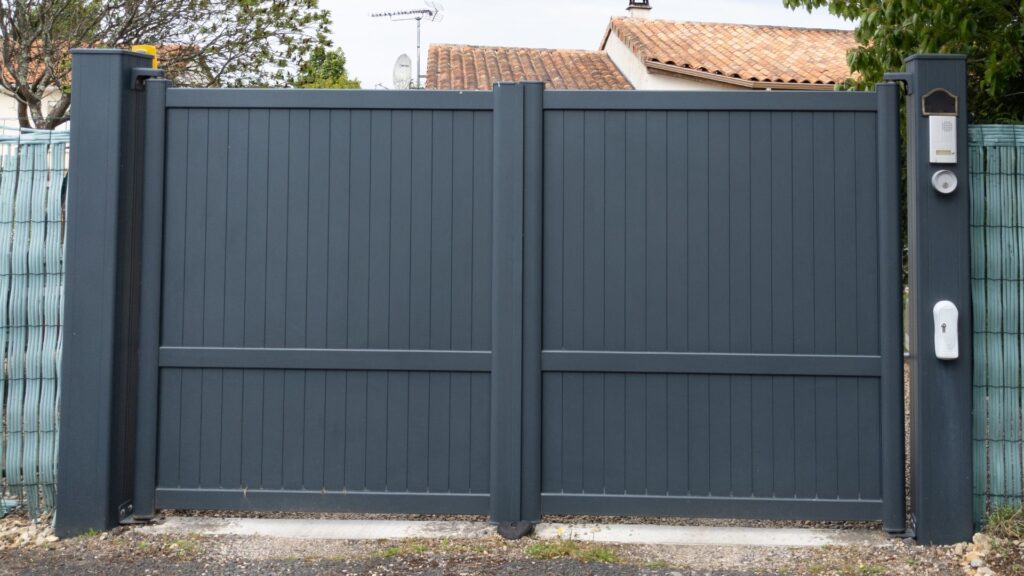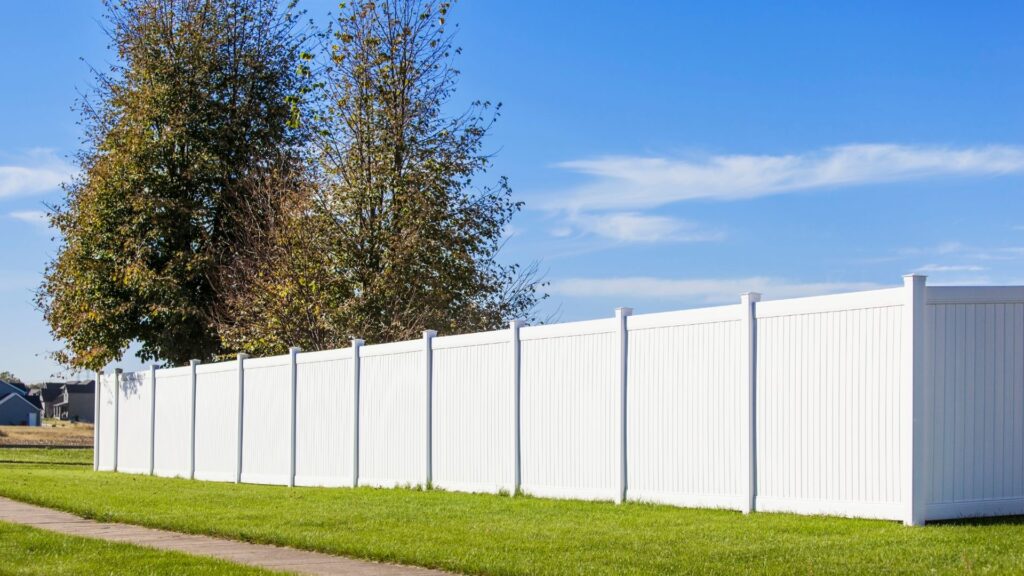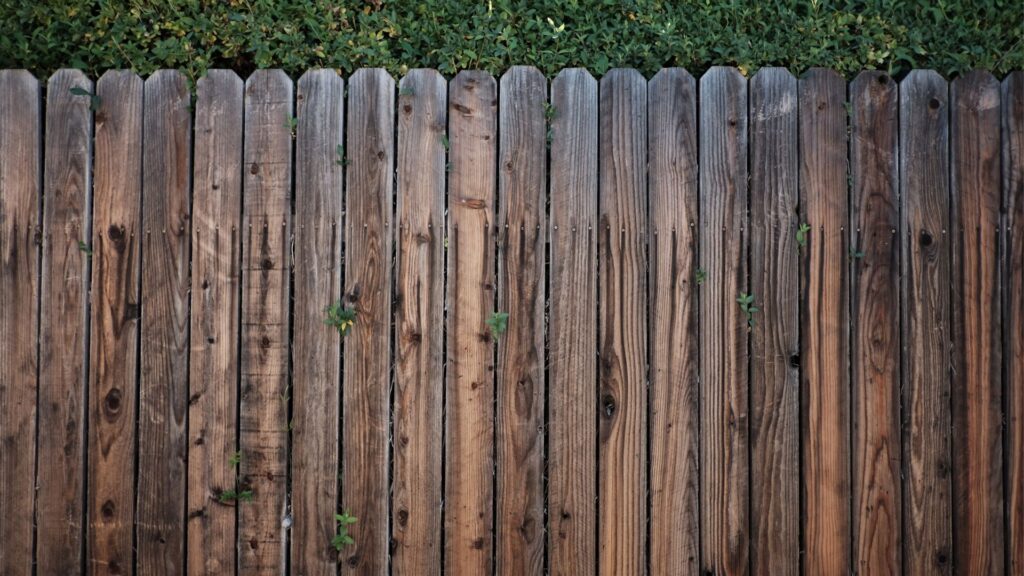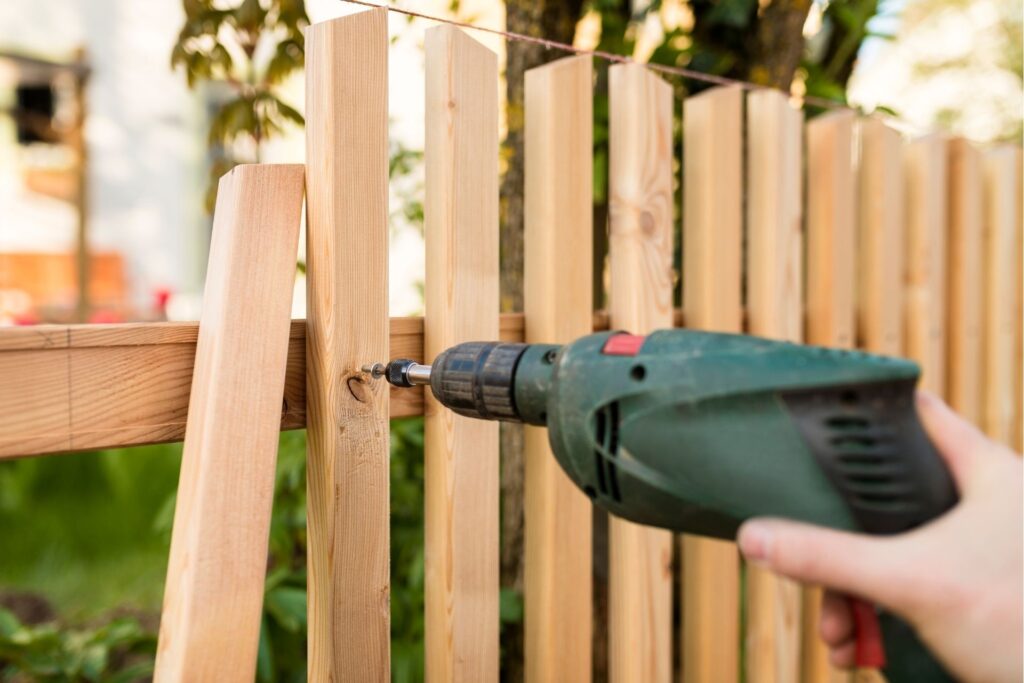Welcome to our guide on the common question: “Can I paint my side of my neighbour’s fence?” If you’ve ever found yourself staring at a dull or mismatched fence that borders your property, you’re probably wondering whether you can freshen it up with a coat of paint. While it might seem like a straightforward task, it’s important to consider the legal, practical, and neighborly aspects before you grab that paintbrush. In this post, we’ll explore the key considerations, from understanding fence ownership and laws to communicating with your neighbor and ensuring you maintain a positive relationship while making your outdoor space reflect your style.
Yes, you can paint your side of your neighbour’s fence, but only with their permission. Legally, the fence belongs to whoever paid for and installed it, even if it borders your property. Before making any changes, it’s important to communicate with your neighbour, clarify ownership, and ensure you respect their property rights. Without consent, altering the fence could lead to disputes or legal consequences.
Table of Contents
Understanding Fence Ownership
Explaining Fence Ownership Laws
When it comes to homeownership, understanding who owns a fence can be crucial in avoiding disputes with neighbors. A fence, often seen as just a property marker, can actually have legal implications depending on who owns it and the laws that govern its installation and maintenance. To navigate this, it’s important to start by understanding what boundary fences and shared fences are.
Boundary fences are structures placed along the edge of a property, often between two neighbors. A shared fence, on the other hand, is typically used by both property owners and is located right on the property line. But who actually owns these fences? The answer can vary based on location, and determining ownership isn’t always straightforward.
To check fence ownership, one usually needs to consult property-related documents like the deed or title of the home. These documents often contain details about the boundaries of the property, and may specify the ownership of any fences. In some cases, an agreement between neighbors may outline who owns or is responsible for maintaining the fence.
It’s also important to understand that fence ownership laws can vary significantly depending on where you live. For example, in the UK, ownership is typically determined by the position of the fence, while in the US, it may depend on agreements or local laws. In Australia, neighbors are often equally responsible for a boundary fence. These regional differences highlight the importance of checking local laws and regulations to ensure you’re on the right side of any potential disputes.
Importance of Clarification
Determining who owns a fence is not just a matter of curiosity; it’s an essential step before making any changes, such as repairs, painting, or replacement. If a fence is shared, any changes made without consulting the co-owner can lead to disputes. Worse, making changes to a fence you don’t own could lead to legal trouble, including fines or having to undo the work. That’s why, before taking action, it’s critical to clarify ownership. Taking the time to understand who holds ownership of the fence helps maintain good neighborly relations and prevents costly legal conflicts down the line.

Can You Legally Paint Your Side?
When it comes to property boundaries, the question of whether you can legally paint “your side“ of a fence often arises. While it might seem straightforward, there are several legal considerations and potential issues to keep in mind before taking action.
Legal Considerations
First and foremost, it’s important to understand that while you may refer to the fence as “your side,” it doesn’t necessarily mean you own it. In most cases, fences are considered shared property or owned by one of the neighbors. Determining ownership is crucial because if the fence is not yours, you cannot make any changes, including painting it, without permission from the owner.
Common law generally dictates that altering someone else’s property without their consent is not permitted. Even if the fence is facing your property, it may still belong to your neighbor. Therefore, painting it without explicit approval can lead to significant consequences. You could face fines, legal disputes, or even lawsuits if your neighbor takes issue with the unauthorized alteration.
These situations can escalate quickly, so it’s always advisable to communicate with your neighbor and obtain their agreement before making any changes. A simple conversation could save you from legal trouble and strained relationships down the line.
Neighborhood Covenants or Homeowners Association Rules
In addition to legal ownership issues, it’s essential to consider any neighborhood covenants or rules set by a Homeowners Association (HOA). Many communities have strict guidelines about altering shared or external property, including fences, to maintain a cohesive appearance throughout the neighborhood.
HOAs often have rules about what changes can be made to fences, particularly those that face the street or shared spaces. These regulations can include stipulations on paint colors, materials, and whether alterations are allowed at all. Violating these rules can result in fines or other penalties from the association, and may even require you to undo the changes at your own expense.
Before you pick up that paintbrush, it’s wise to check both your local regulations and any neighborhood agreements or HOA rules. This step can save you a lot of headaches and ensure that you remain compliant with both legal and community standards.
In conclusion, while you might feel entitled to alter “your side” of the fence, legal and community guidelines are often more complex than they appear. Always seek permission from the fence owner and verify any neighborhood restrictions before making changes to avoid potential conflicts and repercussions.
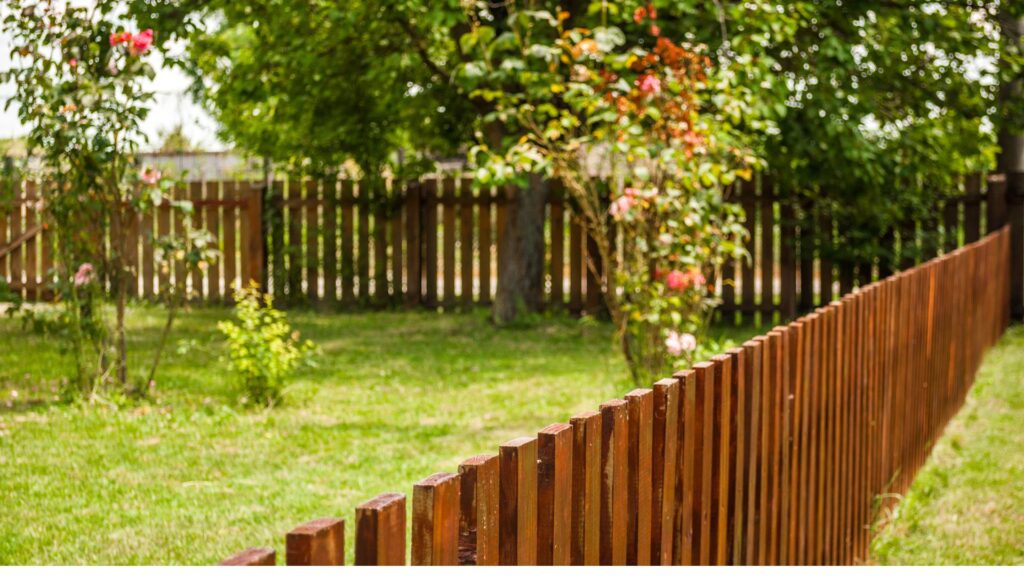
Why Communication Is Key
When it comes to home improvement projects, such as painting your property, effective communication with your neighbors is a crucial step that many overlook. Good communication can help avoid potential conflicts and misunderstandings while fostering positive relationships. In this section, we’ll explore why speaking with your neighbors before you begin any painting project can make all the difference and provide some useful tips on how to approach these conversations respectfully.
Talk Before You Paint
Before picking up that paintbrush, take a moment to talk to your neighbors, especially if your home shares a boundary with theirs. This small step can prevent a lot of unnecessary tension down the line. Painting your home might seem like a personal choice, but it can impact your neighbors—whether it’s the choice of color, the potential for paint to spill over onto shared walls or fences, or even just the inconvenience of noise and work crews.
A simple conversation before you start painting allows you to explain your plans and get a sense of how your neighbor might feel about it. This proactive approach shows that you respect their opinion and are mindful of how your actions might affect them. In many cases, neighbors appreciate being informed and are more likely to respond positively when they feel included in the process.
How to Approach Your Neighbor
Talking to your neighbor about your painting project doesn’t have to be difficult, but it’s important to approach the conversation with respect and openness. Start by explaining your reasons for wanting to paint—whether it’s to improve the curb appeal, protect the exterior from weather damage, or simply update the look of your home. By sharing your motivations, you make the conversation more personal and transparent, which helps reduce the chances of resistance.
When discussing your plans, be prepared to listen to your neighbor’s feedback. Sometimes, they might have concerns you hadn’t considered, such as how the new color might affect the shared space or whether the work will cause any disruptions. Offering compromises can go a long way toward maintaining a good relationship. For example, you might suggest repainting shared boundaries together or choosing a neutral color that both parties are comfortable with. This kind of compromise not only helps avoid conflict but can also strengthen your bond with your neighbor.
Neighbourly Relations
Maintaining a good relationship with your neighbors is essential, especially when it comes to shared boundaries like fences, walls, or driveways. Even after the paint has dried, you’ll continue to live side-by-side, so preserving harmony is always in your best interest. A well-handled conversation about your painting plans is just one step toward building a respectful, cooperative relationship that will benefit both you and your neighbor in the long term.
In summary, communication is key when it comes to any home improvement project. By speaking to your neighbors before you paint, you can prevent misunderstandings, explore potential compromises, and ensure a positive outcome for everyone involved. Taking this approach not only helps protect your property but also strengthens your connection with those living next door—something that can be invaluable in maintaining a peaceful and pleasant living environment.
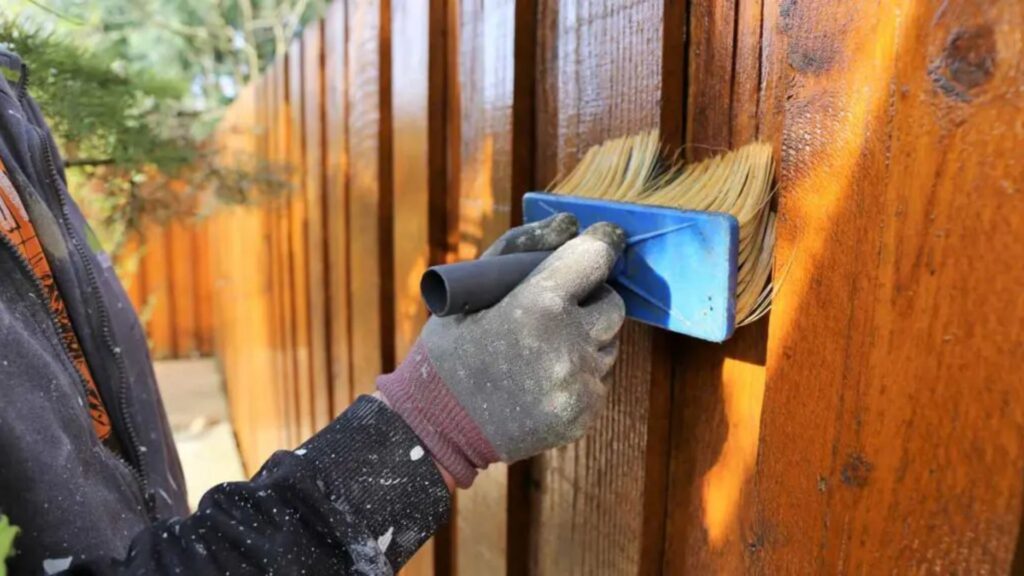
What Happens If Your Neighbour Says No?
When you’re planning to make changes to a shared fence or border, it’s important to consider the possibility that your neighbor might not agree. While it’s frustrating to get a “no,” there are reasons they might not be on board, and understanding their perspective is key to finding a solution that works for both parties.
Understanding Their Point of View
Your neighbor may have valid reasons for declining your request. For instance, they might be attached to the way the current fence looks and feel that any change would disrupt the appearance of their garden or property. In some cases, they may even own the fence, and therefore, any alterations would require their consent. Others might be concerned about the long-term maintenance or structural integrity of the fence, especially if it’s older or delicate. Understanding their reasoning can help you approach the situation more diplomatically, opening the door to a productive conversation rather than a disagreement.
What Are Your Options?
If your neighbor isn’t open to changing the fence, that doesn’t mean you’re out of options. There are plenty of ways to enhance your side of the property without affecting the shared fence itself.
- Install a Privacy Screen: A simple and effective solution is to install your own screen on your side of the fence. This could be anything from bamboo panels to trellises with climbing plants, offering you privacy and aesthetic appeal without touching the fence.
- Decorative Elements: You can add decorative elements like hanging plants, lights, or even wall art to your side of the fence. These additions can significantly change the look of your garden without requiring permission from your neighbor.
- Explore Different Solutions: Perhaps a different approach would satisfy both of you. Could you paint a section of the fence that’s on your side, or create a garden structure like a pergola that achieves the same effect? Sometimes, thinking outside the box leads to a creative compromise that respects both your neighbor’s wishes and your vision.
In conclusion, while a “no” from your neighbor might feel like a setback, it’s important to explore alternative ways to achieve the same goal. By respecting their perspective and considering alternative solutions, you can often find a way to create the outdoor space you want without causing conflict.
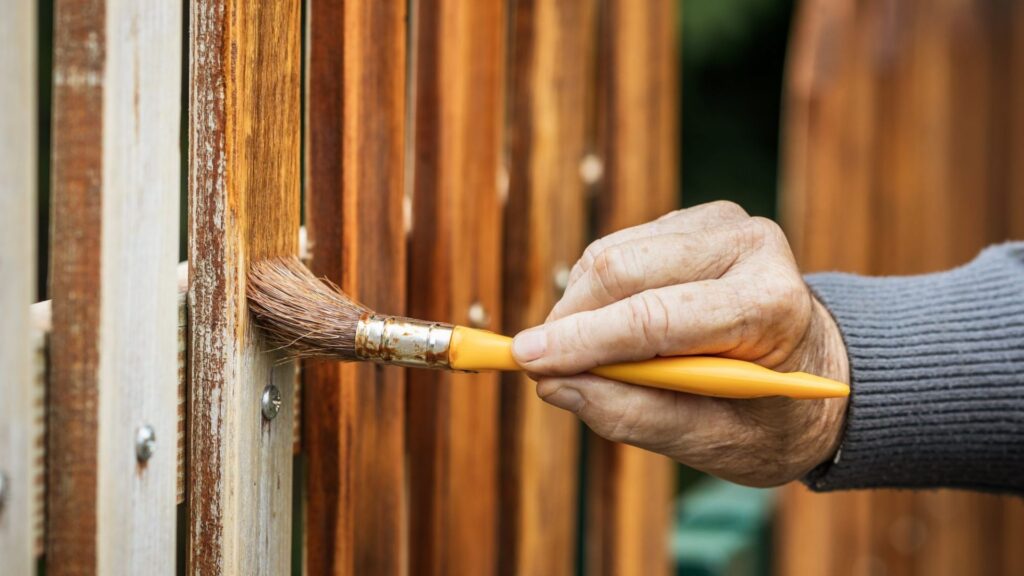
Practical Tips For Painting Your Side Of The Fence
Painting your side of the fence can transform your outdoor space, giving it a fresh, polished look while also protecting the wood. However, there are a few steps you should follow to ensure the process goes smoothly, legally, and yields lasting results. Below are practical tips to help guide you through every stage of painting your fence.
Getting Permission
Before you grab a paintbrush, it’s crucial to get proper permission if your fence is shared with a neighbor. Although you may be painting only your side, it’s best to communicate openly and get their approval in writing. A simple, written agreement not only ensures you’re both on the same page but can also avoid any potential disputes in the future. This step is essential, particularly if the fence lies on the property line.
Preparation
Proper preparation is key to achieving a smooth, long-lasting finish. Here’s how you can prepare your fence for painting:
1. Cleaning: Start by thoroughly cleaning the fence to remove dirt, mildew, and old paint residue. You can use a pressure washer or a stiff brush and soapy water for effective results. A clean surface allows the paint to adhere better and prevents issues later.
2. Sanding: Once the fence is clean and dry, inspect it for rough spots or splinters. Sand these areas down to create a smooth surface for painting. Sanding also helps to remove any loose or chipped paint, ensuring your new coat sticks well.
3. Priming: Applying a primer is a crucial step, especially if you’re painting a wooden fence for the first time. Primer seals the wood and provides a solid base for your topcoat. If your fence is made from a material like metal or vinyl, ensure you use a primer specifically designed for that surface.
4. Special Considerations: Different types of wood or materials might require special treatment. For example, softwoods like pine or cedar are prone to absorbing moisture, so using a wood preservative before priming can increase durability. Metal fences may need rust-proofing, and vinyl fences might benefit from a specific type of primer to help the paint adhere properly.
Choosing the Right Paint
Selecting the right type of paint or stain is essential to ensure your fence stands up to weather conditions and looks great for years to come. Here are some tips for choosing the best option:
1. Weather-resistant paints or stains: Outdoor fences are exposed to the elements year-round, so it’s important to pick a paint that’s designed to withstand rain, UV rays, and temperature changes. Look for paints or stains labeled as “weatherproof” or “UV-resistant” to ensure longevity.
2. Eco-friendly options: If you’re environmentally conscious, opt for low-VOC (volatile organic compounds) paints, which are safer for the environment and your health. Eco-friendly paints come in a variety of finishes and colors, and they perform just as well as traditional paints.
3. Paint vs. stain: Paint provides a solid, opaque color, while stain allows the natural texture of the wood to show through. Depending on the look you want and the material of your fence, choose the option that best suits your needs.
Painting Tips
Once your fence is prepped and you’ve selected the right paint, it’s time to start painting. Here are some useful tips to ensure a smooth process:
1. Tools you’ll need: For painting a fence, use a combination of brushes, rollers, and possibly a sprayer for hard-to-reach areas. A paintbrush is ideal for detailed work and getting into corners, while a roller can cover large, flat surfaces quickly.
2. Avoiding damage to plants and soil: If you have plants or grass near the fence, make sure to protect them. Cover surrounding plants with drop cloths and use painter’s tape to protect any parts of the fence or garden features that shouldn’t be painted.
3. Step-by-step process:
- Start painting from the top and work your way down to avoid drips.
- Use even strokes to apply the paint in thin layers. This will prevent clumping and peeling later on.
- Allow each coat to dry fully before applying the next one. Depending on the paint, you may need two or more coats for full coverage.
Maintenance Tips
Once you’ve painted your fence, maintenance is essential to keep it looking fresh and protect it from wear and tear. Follow these simple maintenance tips:
1. Regular cleaning: Every few months, hose down your fence to remove dirt and debris. If mildew or mold develops, clean it with a mild solution of bleach and water.
2. Inspect for damage: Regularly check for signs of peeling or chipping paint. Touch up any problem areas as soon as they appear to prevent moisture from getting into the wood and causing more damage.
3. Repainting schedule: Depending on the weather conditions in your area and the type of paint used, you may need to repaint your fence every 3 to 5 years. Regular touch-ups can extend the life of the paint and keep your fence looking vibrant longer.
By following these practical tips for painting your side of the fence, you can enhance your outdoor space while ensuring the longevity and beauty of the fence. Proper preparation, the right materials, and regular maintenance will help you achieve a professional-looking result that lasts for years.

What If The Fence Is Shared?
Shared Fences or Party Fences
A shared fence, also known as a “party fence,” is a boundary structure that sits on the property line between two neighboring properties and is jointly owned by both parties. In this situation, both homeowners share equal responsibility for the upkeep, repairs, or any modifications needed on the fence. This shared ownership means that each party is equally liable for the costs associated with maintaining the fence, ensuring that it remains functional, safe, and aesthetically pleasing.
The concept of a shared fence is fairly common in many residential areas where houses are built closely together. Since the fence benefits both properties, its care and management should be a joint effort. However, it’s crucial to establish clear communication with your neighbor from the outset to avoid misunderstandings or disputes.
Some common issues that arise with shared fences include disagreements about repairs, the type of materials used, or changes in appearance like painting or staining. Handling these discussions openly and amicably can prevent future conflicts.
Decision-Making for Shared Fences
When it comes to making decisions about shared fences, it’s highly recommended that neighbors establish a formal, written agreement. This document should outline key aspects of fence maintenance, such as who is responsible for regular upkeep, how repairs or replacements will be handled, and what happens when one party wants to make changes to the fence, such as painting, replacing boards, or altering its structure. A written agreement can serve as a reference point in case disputes arise, ensuring both parties are on the same page.
For example, if one neighbor wants to paint the fence a certain color or replace it with a different style of fencing, it’s essential to have a conversation first. In some cases, local regulations may even require both parties to agree before any modifications are made. Having an agreement in place can simplify these discussions and prevent any confusion or frustration.
By maintaining open lines of communication and formalizing any decisions about shared fences, neighbors can work together to ensure their shared boundary remains well-kept and suitable for both parties’ needs.

Avoiding Disputes: How To Handle A Fence Disagreement
Disagreements with neighbors over fences can be stressful, but handling the situation calmly and thoughtfully can go a long way toward maintaining a positive relationship and avoiding further tension. Below are some practical steps and tips to help you navigate a fence dispute effectively.
What to Do If You’re in a Dispute
The first step in resolving a fence dispute is to approach the situation calmly and professionally. It’s important to avoid letting emotions escalate the conflict. Start by having a conversation with your neighbor. You might be surprised how often a simple discussion can clear up misunderstandings. Be open to hearing their perspective, and express your concerns clearly but respectfully. Remember, a friendly negotiation is often the quickest and easiest way to find a resolution.
If the conversation doesn’t lead to a solution, consider bringing in a neutral third party, like a mediator. Mediation allows both parties to express their concerns in a structured setting, guided by a professional who can help facilitate a fair agreement. Mediation is a less formal and less expensive option than going to court and can preserve good neighborly relations in the long run.
Legal Action
In cases where negotiation and mediation fail, you may need to consider legal action. However, it’s important to understand that this should always be the last resort. Taking legal steps can be costly, time-consuming, and could further damage your relationship with your neighbor. Before pursuing legal action, make sure you’ve thoroughly explored all other avenues for resolving the issue.
Tips for Maintaining Good Neighbor Relations
Disputes with neighbors, especially over something like a fence, can easily create long-term resentment if not handled properly. Here are some tips for keeping things cordial:
- Stay calm: Even if you feel frustrated, try to keep your emotions in check. Remaining calm during conversations can help keep the situation from escalating.
- Be respectful: A little bit of respect goes a long way. Listen to your neighbor’s concerns, and make sure you’re communicating your points without being confrontational.
- Compromise where possible: Try to find a solution that works for both of you. A willingness to compromise shows good faith and can make it easier for your neighbor to do the same.
- Follow up: After reaching a solution, check in with your neighbor to make sure everyone remains on the same page and that any agreements are being respected. This helps ensure the issue doesn’t resurface later.
By handling a fence disagreement with diplomacy and a willingness to find common ground, you’ll be more likely to resolve the issue without legal battles or lingering animosity.

Case Study Or Example
Real-Life Example
Let’s consider a real-life example of Sarah, a homeowner who wanted to paint her side of a shared fence. Sarah had recently moved into a new neighborhood and noticed that her side of the fence, which she shared with her neighbor, was worn and needed some attention. Since she loved a clean, modern look, she decided to paint it in a neutral grey to match her home’s exterior.
However, Sarah was unsure whether her neighbor would be okay with her painting the fence. Instead of assuming it was fine, Sarah reached out to her neighbor, Mr. Johnson, to discuss her plans. They had a friendly conversation, and while Mr. Johnson didn’t mind her painting her side of the fence, he asked if she could use a color that wouldn’t clash too much with the natural wood on his side. After discussing, they agreed on a color palette that both of them liked.
Sarah carefully painted her side of the fence, ensuring she didn’t spill over to Mr. Johnson’s side. In the end, both parties were happy with the outcome. Sarah got the fresh look she wanted, and Mr. Johnson appreciated her respect for his property.
Lessons Learned
From this example, a few key takeaways stand out:
1. Open Communication is Key: Before making any changes to a shared structure like a fence, always have a conversation with your neighbor. This can prevent misunderstandings and foster a good relationship.
2. Compromise Can Lead to a Win-Win: By discussing color choices, Sarah and her neighbor found a solution that worked for both of them, showing that compromise is often the best route.
3. Respect for Property Boundaries: Sarah was careful to only paint her side of the fence, respecting her neighbor’s space. This is a critical lesson in maintaining harmony and avoiding conflicts over property.
4. Consider Aesthetics and Practicality: The discussion about color helped ensure that both sides of the fence looked aesthetically pleasing. It’s important to balance your preferences with what works for your neighbor and the overall environment.
By following these lessons, homeowners can avoid unnecessary disputes and create an outcome that benefits both parties. Whether it’s a simple fence painting or any other shared project, communication, compromise, and respect for boundaries are essential to maintaining good neighborly relations.
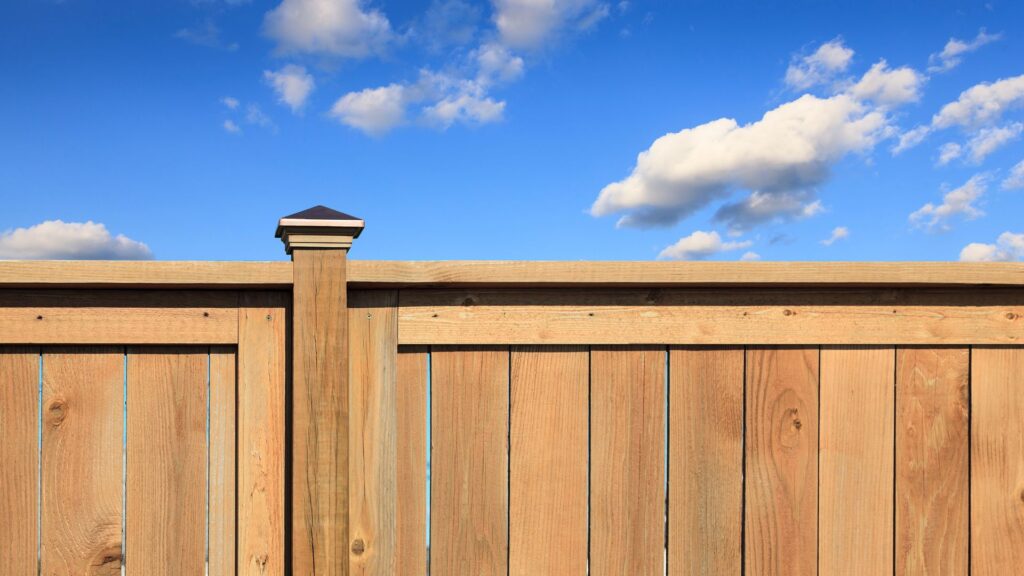
FAQs: About Can I Paint My Side Of My Neighbours Fence
Can I paint my side of my neighbour’s fence without asking?
No, you should not paint your side of your neighbour’s fence without their permission. The fence is legally their property, and altering it without consent could lead to disputes or even legal action.
Who owns the fence between me and my neighbour?
The ownership of the fence depends on property boundaries and who paid for the fence installation. Typically, property deeds or surveys can indicate who owns the fence. In many cases, the owner is responsible for maintaining the side that faces their property.
What should I do if I want to paint my side of the fence?
If you wish to paint your side of the fence, the first step is to talk to your neighbour. Explain your reasons and request their permission. It’s important to maintain a respectful dialogue to avoid conflicts.
What happens if my neighbour says no to painting the fence?
If your neighbour refuses to let you paint the fence, you should respect their decision. As an alternative, you can consider installing a screen or another decorative element on your side of the property that doesn’t alter the fence.
Can I paint the fence if it’s a shared or party fence?
If the fence is shared or a “party fence,” both you and your neighbour jointly own it. In this case, both parties need to agree on any changes, including painting. Written agreements can help clarify responsibilities and avoid misunderstandings.
Are there any legal consequences for painting my neighbour’s fence without permission?
Yes, painting your neighbour’s fence without permission can lead to legal consequences, including being held responsible for restoring the fence to its original state or paying damages. Always get written permission before making any changes.
How can I check if my neighbour owns the fence?
You can check the ownership of the fence by reviewing the property deed, title, or survey. Sometimes, the “T-mark” on property boundary maps indicates who is responsible for the fence. You can also contact a local property authority for clarification.
What if I don’t like the colour of my neighbour’s fence?
If you don’t like the colour of your neighbour’s fence, the best approach is to have a friendly conversation with them. Offer suggestions for a repainting project or ask if they are open to compromise. However, remember that ultimately, the decision is theirs.
Can I install my own fence next to my neighbour’s fence?
Yes, you can install your own fence on your property, next to your neighbour’s fence, provided it’s within your property boundaries. This way, you have control over the appearance without affecting their fence.
Are there any alternatives to painting my side of the neighbour’s fence?
If your neighbour doesn’t agree to let you paint the fence, you can explore alternatives like adding decorative elements, installing climbing plants, or using a garden screen to enhance the look of your side of the fence without altering it directly.
Conclusion
In conclusion, when deciding whether to paint your side of a shared fence, it’s essential to keep a few key points in mind. Ownership of the fence, clear communication with your neighbor, understanding any potential legal implications, and exploring alternative options are all important considerations. While enhancing your space by painting your side of the fence can be beneficial, maintaining open communication and a respectful relationship with your neighbor is equally important. Always prioritize discussion to avoid misunderstandings. We encourage you to share your own experiences or ask any questions in the comments below!
About the Author:
Mike Veail is a recognized digital marketing expert with over 6 years of experience in helping tradespeople and small businesses thrive online. A former quantity surveyor, Mike combines deep industry knowledge with hands-on expertise in SEO and Google Ads. His marketing strategies are tailored to the specific needs of the trades sector, helping businesses increase visibility and generate more leads through proven, ethical methods.
Mike has successfully partnered with numerous companies, establishing a track record of delivering measurable results. His work has been featured across various platforms that showcase his expertise in lead generation and online marketing for the trades sector.
Learn more about Mike's experience and services at https://theleadguy.online or follow him on social media:



